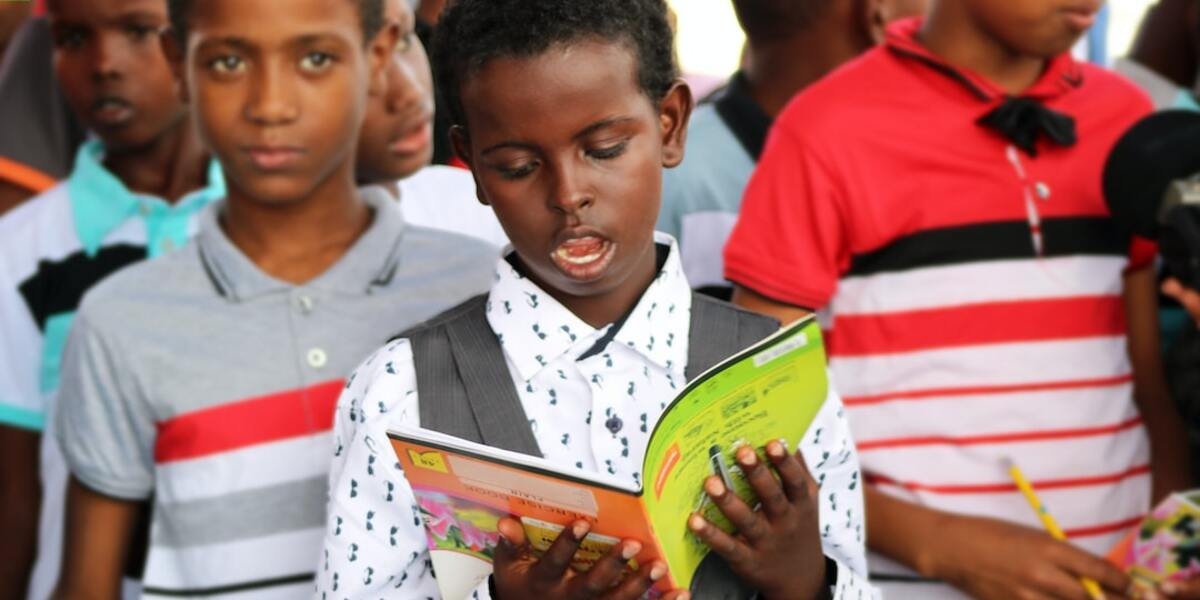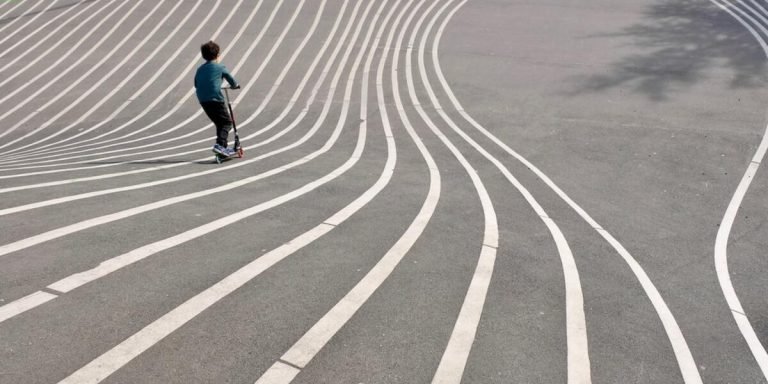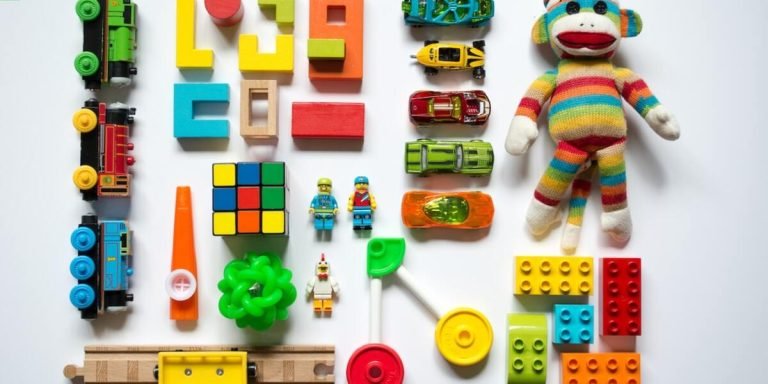Sensory Development in Early Childhood: A Comprehensive Guide
Understanding sensory development in young children can be challenging, especially for parents and educators who may not have a background in early childhood education. However, it is crucial for adult caregivers to grasp the basic concepts of this process as it forms an integral part of children’s overall growth and learning. Sensory development refers to the way kids learn about their environment through being attentive to various stimuli such as touch, sight, smell or sound.
In today’s world where special education resources appear infinite yet convoluted at times; having comprehensive knowledge about sensory development phases can aid caregivers immensely when trying to provide adequate support systems for the child. From distinguishing between normal behavior patterns and areas that require further attention or intervention–focusing on sensory progress paves way towards more effective educational methods tailored specifically according your tiny tot’s needs.
Did you know?
Did you know that by the time a child turns one, their brain would have already developed to about 70% of its adult size? Interestingly, much of this rapid development is attributed to sensory experiences in early childhood.
Understanding Sensory Development in Special Education
The modern age of education has seen a significant shift towards integrating technology in effectively teaching special needs students. One area where this innovation is particularly benefiting is sensory development, a critical aspect for children with special educational needs (SEN). Often neglected or misunderstood, understanding and aiding sensory development entails addressing the ways these learners process information from their environment.
Incorporating technology here opens fresh avenues to complement traditional methods used within Special Education Resources and Support Systems. Assistive technologies like tactile stimuli devices enable SEN students to explore various textures through touch – greatly improving their ability to interpret surrounding inputs while providing valuable data on individual cognitive progression.
Moreover, interactive virtual reality tools are revolutionizing how educators approach visual input activities aimed at enhancing ocular motor skills amongst visually impaired youngsters. These interactive experiences simulate real-world scenarios that adapt dynamically as per user responses ensuring personalized learning pathways catering specifically to each student’s unique requirements in promoting enhanced sensory integration.
Imaginative application of available tech resources also includes the use of sound therapy apps designed for auditory stimulation exercises crucial for hearing impaired individuals. In 2023 alone, we’ve witnessed breakthrough advancements such as AIs programmed around soothing music patterns mimicking natural environmental sounds thereby significantly lowering anxiety levels among autistic learners during classroom hours.
It’s evident thus that merging technology into educating our future generations with varied abilities heightens our potential successfully bolstering overall learning outcomes embracing inclusion every step along the way.
Recognizing Signs of Sensory Processing Issues
With the rise in technology integration, recognizing signs of sensory processing issues is crucial for educators and parents alike. Sensory development plays a pivotal role in how children interact with their environment. For children enrolled in special education programs, understanding these signals can help drive effective educational strategies.
Thanks to advancements within the technological realm like adaptive learning software and assistive communication devices, we now have tools set up specifically designed for detection and intervention of such cases at an early stage itself.
For instance: Is your child unable to tolerate certain textures? Do loud noises make them agitated? Are they clumsier than their peers?
All these could be suggestive cues pointing towards possible disruptions regarding sensory information processing.
Moreover, some children may exhibit self-stimulation behaviors—adopting repetitive movements or making specific sounds—to calm themselves down from unbearable stimuli overload on their senses; another potential signal hinting at underlying problems connected with sensory development.
Strategies for Supporting Students with Sensory Challenges
To best support students with sensory challenges, it’s crucial that both parents and educators understand the importance of integrating innovative strategies in their approach. One key area to focus on is leveraging technology to enhance instructional methods related to sensory development.
The first strategy involves utilizing digital resources for special education. This includes graphically rich interactive eBooks or mobile applications focused on enhancing tactile experiences. These resources often provide visual aids and simulations which can help students grasp complex ideas tied up with sensations such as touch, smell, sight or sound more clearly.
Another promising method lies within assistive technological devices (ATDs). ATDs like hearing aids and text-to-speech tools serve dual purposes; they not only accommodate individual needs but also create a conducive learning environment where each student has an equal opportunity toward educational attainment.
Designing Effective Sensory Spaces in Educational Settings
Designing effective sensory spaces for students can play a pivotal role in their learning and development. This integration becomes particularly significant when we consider the importance of sensory development, which refers to how children process and understand information from different surroundings through their senses. When educational environments are thoughtfully designed with these concepts in mind, they provide an invaluable facility for fostering cognitive growth.
In recent times, technology has grown tremendously as one of the key tools aiding teaching practices within classrooms. Teaching materials that stimulate visual, auditory or tactile stimuli prove undeniably beneficial to developing young minds. Ever-evolving digital devices such as interactive whiteboards, virtual reality kits or even straightforward applications on tablets offer immersive experiences crucial for youngsters’ exploration and understanding of diverse subjects.
Furthermore, special education resources have made substantial strides forward by taking advantage of comprehensive technological solutions tailored specifically towards individual student requirements—whether it be voice-to-text software offering assistance to dyslexic individuals or custom-made games catering specially to autistic kids by creating soothing color formations adjusting according to user interactions.
The merger between inclusive design principles focussed on serving varied needs along with advanced tech-education interfaces creates powerful avenues supporting overall childhood education journey’s success spanning conventional benchmarks while crossing into territories often overlooked but equally vital: Sensory Development & Special Education Resources Support.
Key Elements of a Sensory Room Layout
Creating an environment that promotes sensory development in children can have a profound impact on their learning process. A well-designed sensory room layout integrates technology by focusing on five key elements to boost physical, cognitive and emotional growth.
1. **Selection of Appropriate Sensory Equipment:** The core component of any sensory space is the equipment used. It’s vital to select items such as LED interactive panels or sound-activated light tubes which stimulate multiple senses at once while being suitable for use in 2023’s educational settings.
2. **Sensory-Specific Zones:** Designing zones within the room dedicated to specific senses like touch-based activities enhances tactile skills, whereas auditory corner with headphones and music player focuses mainly on hearing stimulation promoting auditory processing capabilities.
3. **Integration of Technology:** Modern-day classrooms utilize digital tools notably artificial intelligence (AI) toys for special needs education resources support aiding speech therapy or tablets featuring apps creating calming visual experiences fostering both tranquility and focus are increasingly becoming integral parts in facilitating effective early childhood education through technological advancements geared towards promoting inclusive learning environments.
4.User-friendly Controls: In designing a successful sensory space, consider user-friendly technologies enabling students themselves control over what they want to engage with – from dimmable lights to variable-speed fans providing a sense of empowerment encouraging exploration without fear thereby nurturing independence abilities among them effortlessly.
Incorporating Multi-Sensory Equipment for Enhanced Learning
In today’s dynamic educational landscape, the fusion of technology and special education resources has become pivotal in shaping individual learning experiences. One such integration is seen with multi-sensory equipment – a tool that significantly accelerates sensory development in youngsters.
Multi-sensory equipment utilizes all five senses to enhance students’ cognitive abilities. These tools offer children hands-on experience, promoting active learning – this method directly impacts their auditory, visual and kinesthetic skills leading to overall improved academic performance.
So how do we incorporate these sophisticated tools into classrooms?
Understanding Needs & Selecting Relevant Equipment: Each child has unique needs when it comes to sensory development. Thus first step involves understanding individual requirements followed by selecting appropriate multi-sensory devices or software for them.
Integration within Lesson Plans: Blend your selected tech-tools seamlessly within daily lesson plans as per curriculum guidelines. Inclusion should appear natural rather than enforced bringing forth an engaging teaching-learning process fostering curiosity amongst youngsters.
Teacher Training: The effectiveness of any device lies in its optimal usage- which can only be ensured through adequate training to educators on handling various kinds of sensorial stimulation tools effectively.
Trial Runs & Adjustments: Before fully integrating these innovative pieces into classroom routines, arrange some trial periods for learners allowing time for necessary adjustments ensuring no student feels overwhelmed during regular classes.
Tailoring Teaching Techniques to Foster Sensory Development
Harnessing the power of technology in education opens new and fascinating doorways for fostering sensory development in children. It not only refines conventional teaching techniques but also introduces innovative interventions that cater to each child’s unique learning style.
Incorporating technology into a curriculum is no longer an option; instead, it’s a necessity, given our dynamically evolving educational landscape. Today’s tech-savvy generation benefits from digital resources as they are more engaging because these tools often tap into multiple senses simultaneously. For example, interactive games can improve hand-eye coordination while immersive VR experiences stimulate visual and auditory senses, promoting overall sensory integration.
Children with special needs particularly stand to gain significantly from this technological revolution within classrooms across the globe. Tailored apps and gadgets serve as essential aids by providing better accessibility options and alternative methods of interaction suited specifically for them which crucify traditional limitations faced by such students before 2023.
Moreover, regular use of assistive software or devices fosters familiarity over time thus encouraging independence among learners whilst reinforcing concepts taught traditionally minus any pressure.
Remember however there isn’t one-size-fits-all solution here since optimal blend varies per individual need so educators must continually adapt incorporating fresh advances maintain pace changing requirements yet never losing sight core objective – nurturing lifelong love learning all regardless abilities challenges!
Adapting Instructional Methods for Diverse Learner Needs
In order to foster sensory development in children, adapting your instructional methods is pivotal. In 2023, technology integration has significantly evolved and improved educational strategies for special education students with diverse learning needs.
Firstly, incorporating visual aids like interactive whiteboards or Projectors can help leverage a child’s natural inclination towards colors and figures – enhancing their visual-spatial skills. When these tools are tailored based on the individual learner’s routine, it makes teaching more effective while also promoting sensory development.
Thirdly implementing tactile experiences through haptic technology allows learners to physically interact with lessons creating meaningful connections thus enriching their sensory-engagement during instructional periods.
Utilizing Assistive Technologies in Special Education
Harnessing the power of modern technology, we are now better equipped to tailor teaching techniques that can help foster sensory development in children. In the sphere of special education, assistive technologies have emerged as powerful tools that offer a unique blend of support and resources.
Assistive technologies come in various forms – from specialized software applications designed for interactive learning to devices such as digital hearing aids and braille printers. These instruments not only make life easier for those with disabilities but also play an essential role in enhancing their quality of education by promoting inclusion.
One prime example is text-to-speech (TTS) technology which helps students who struggle with reading or suffer from dyslexia. This remarkable tool reads out written information displayed on a screen making it much simpler for these youngsters to understand new concepts presented through textbooks or online content.
Conclusion
Truly, sensory development in early childhood is an extraordinary journey that prepares our little ones for future learning and growth. It’s important to remember that every child develops at their own pace; therefore, patience combined with consistent support goes a long way. By understanding your child’s sensory needs and providing them with appropriate resources, you’re not just helping them navigate the world better but also laying a solid foundation for all subsequent educational experiences.
Now that you’re armed with this comprehensive guide on sensory development, we hope it makes parenting or educating young children less daunting. Let us continue to be your trusted companion on this rewarding voyage of nurturing curious minds into assured personalities. We invite you to explore more topics around childhood education along those lines on our website – because every step counts when guiding potential towards achievement!







